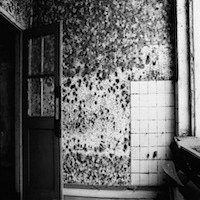Moldy Oldies – Time for Immediate Remediation?
When the New Paltz, NY planning and zoning secretary went into the basement of the town hall she expected to return with a handful of old records. Instead, a massive colony of black mold sent her running back upstairs with a constricted throat and red eyes.
 Now town officials are trying to decide if it’s worth remediating the facility or if it’s time for total destruction. But could this problem have been avoided?
Now town officials are trying to decide if it’s worth remediating the facility or if it’s time for total destruction. But could this problem have been avoided?
A Growing Concern
After recovering, the town’s secretary braved the basement again and found an entire room covered in black mold – a room that sits directly under the office of the highway superintendant.
And although the issue has just recently been identified, town supervisor Susan Zimet said that emergency services personnel have repeatedly mentioned that there’s something off about the way the building smells.
Mold Patrol
Mold spores need just two things for rapid growth: nutrients and water. According to the Environmental Protection Agency, many household building materials such as ceiling tiles, wood, drywall and carpet contain enough organic matter to support mold growth.
Coupled with water – typically in the form of a leak or drainage issue – mold starts to grow. While some molds give off a musty smell, others don’t produce any odor.
There are over 100,000 species of mold worldwide, and around 10% of these prefer indoor environments. Common types in your home include allergenic molds such as alternaria, cladosproium and aspergillus.
These act much like pollen and cause allergic reactions in certain individuals, for example those with asthma. Pathogenic molds such as bipolaris, meanwhile, can cause infections in those with compromised immune systems such as children or the elderly.
Strachybotrys atra. This is the big one: black mold. It spreads rapidly, loves building materials and is toxigenic, which means it produces mycotoxins. If inhaled, these toxins produce a range of symptoms including shortness of breath, red eyes, coughing and fever.
Clean-up or Call-out?
So what happens if you discover black mold? First step: run away. Second, get a mask and some gloves and go back. Take a rough measurement – if it’s less than 10 square feet, or roughly 3 feet by 3 feet, you can tackle it on your own.
The Centers for Disease Control and Prevention offer several cleaning options: commercial products, soap and water or a bleach/water solution. Take note, however, that while soap and water will remove surface mold and possibly mold stains, it won’t kill any living spores and mold will grow right back. If you have a larger-than-average infestation, consider a Mold and Mildew Inhibitor with a combination EPA registered cleaner/disinfectant like MoldTek industrial mold cleaner.
Goodway.com is also a helpful resource for facilities affected by flooding and offers you some of the best advice and products to get your facilities back in operation. For example, CoilShine-BC Mold and Mildew Inhibitor is a commercial grade, EPA-registered, ready-to-use treatment that inhibits mold growth. It can be applied to coils, ducts, drain pains, and other components. In addition, FreshDuct Odor Eliminator controls the odor left behind by mold and mildew. It’s non-toxic and biodegradable, destroys odor molecules on contact, and leaves your ducts smelling fresh.
Bigger than 10 square feet and you need to call in a remediation company to tarp off the area and handle the problem.
Does your building have a case of the moldy oldies? Get it checked out ASAP.
Next Steps:
- Subscribe to our blog to receive the full blog series via email and stay informed about the latest HVAC news and insight.
- Stay up to date on facility maintenance tools such as chiller tube cleaners, boiler tube cleaners, hose/pipe cleaners, descaler systems, industrial vacuums, commercial pressure washers, and drain cleaners.

